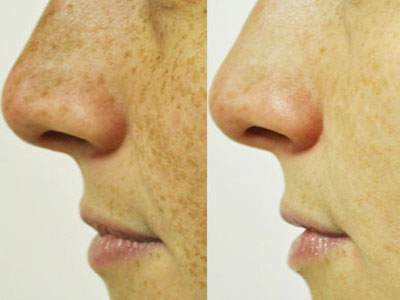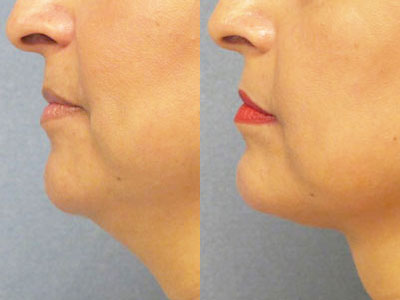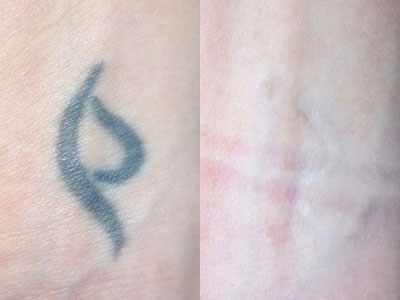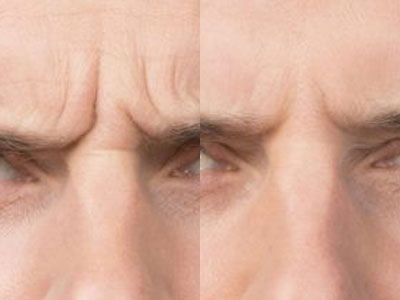You’re flipping through old photos and think to yourself, “I look so young here!”
It has you considering Botox or fillers, but you aren’t sure where to start. You’ve heard of both from girlfriends, TV commercials, and magazines, but you’re not even sure which would be most beneficial when it comes to your needs.
You’re in the right place.
This guide will help you make the best decision for you.
When it comes to Botox and fillers, we’ll compare:
- Cost
- Pros and cons of each for different parts of the face
- How long they last; and
- Common questions about injectables
What Is The Difference Between Fillers and Botox?
Before you make an appointment, you want to know what is the difference between Botox and fillers?
To put it simply, Botox is injected into the muscles to “freeze” them, stopping the wrinkles caused by common facial expressions. In contrast, fillers are injected into the face’s soft tissues, plumping or “filling in” the areas that have lost natural volume over time.
Let’s dive a little deeper.
Botox is a brand name for one kind of botulinum toxin. Others you may have heard of include:
Injectable dermal fillers are made up of collagen, hyaluronic acid, Poly-L-lactic acid, and more. Bridgetown Aesthetics offers a number of different fillers, including:

Botox and Fillers: How Are They Similar?
Now that we’ve addressed that burning question,
“What’s the difference between Botox and fillers?”
Let’s take some time to address how the two are similar.
Botox and fillers are both:
- Cosmetic treatments given as injections
- Used to address signs of aging
- FDA approved for use in the U.S.
- Considered safe, with side effects occurring in less than 1 percent of recipients
Botox vs. Fillers: Cost
Cosmetic injectables are an investment in your confidence.
Botox is priced per unit, and each unit costs an average of $10 to $15. How many units you need to purchase will depend on the area you’re planning to treat.
Fillers are priced per syringe and range from $500 to $1000, depending on the brand and formula.
However, it’s difficult to compare the cost of Botox and fillers because fillers generally last longer. So while your price per visit might be higher, you’ll need touch-ups less often.
How Much Does Filler and Botox Cost?
This is a tough question to answer. That’s because the overall cost of fillers or Botox is completely dependent on the patient and the patient’s desired results.
Depending on the type of treatment and treatment location, Botox and filler injection treatments can range in price from $200 to more than $1,000.
The total cost of cosmetic injectables will vary based on several factors:
- Treatment plan/treatment area
- Brand of the product being used
- Volume of the product being used
- Whether the person administering your Botox or filler is a licensed and trained medical professional
- Geographic location
For example, someone coming in to target their crow’s feet in Portland will likely have a lower final bill than someone aiming to tackle their forehead lines and lips in New York City.
Comparing 3 Common Areas For Botox or Fillers
When deciding between Botox or fillers, it’s important to first understand what kind of wrinkles you’re targeting.
There are two types of wrinkles.
- Dynamic wrinkles – Caused by repetitive muscle contractions, like smiling or squinting of the eyes.
Botox is highly effective at treating dynamic wrinkles, such as:
- Forehead lines
- The “11s” between your eyebrows
- Crow’s feet around the eyes
- And neck bands
- Static wrinkles – Lines and folds on the face that are visible and present when a person’s face is resting or expressionless.
Dermal fillers are used to add volume underneath the skin, effectively diminishing the appearance of static wrinkles, such as:
- Smile lines
- Vertical lip lines
- Chin wrinkles
Here are some common dermal injection areas and how to decide whether Botox or fillers are preferable.

#1: Botox vs. Fillers For Forehead
Forehead wrinkles are often caused by overworked facial muscles.
If this is the case, these are dynamic wrinkles, making Botox a great option.
#2: Botox vs. Fillers: Lips
In the market for fuller, more kissable lips?
When it comes to choosing Botox vs. fillers for lips, fillers may be the best option.
Juvederm is the most recommended lip filler provided through Bridgetown Aesthetics.
This FDA-approved lip filler doesn’t require an allergy test and provides a natural feel and texture to your lips.
Juvederm is used to increase the space between your top lip and nose or to balance out the size of your lips.
It has a hyaluronic acid formula, which is a naturally occurring substance in the human body that helps tissues retain water.
#3: Face Fillers vs. Botox
When deciding on fillers vs. Botox for other parts of the face, you’ll want to make your choice based on the type of wrinkles you’re dealing with.
Botox vs. Fillers for Crow’s Feet
Crow’s feet are the wrinkles coming from the corners of the eyes. They develop over time and are considered dynamic wrinkles. This makes Botox an ideal option for treating crow’s feet.
Botox vs. Fillers for Eyes
To address a tired-looking, sunken under-eye area, fillers (commonly hyaluronic acid) can be used to plump and brighten these trouble spots.
Botox vs. Fillers for Frown Lines
Frown lines are often referred to as “11s”. They are the two vertical lines between your eyebrows. They appear after years of repeated movement, combined with the loss of skin elasticity we experience with age.
Depending on the severity of your frown lines, Botox might be the best option.
Botox vs. Fillers for Smile Lines
Completely eliminating smile lines with Botox may end up looking unnatural. That’s why dermal fillers are often a better choice for this area.
Fillers can help you achieve a more youthful look by adding volume to the smile lines around the mouth without completely erasing them.
Filler vs. Botox: Common Questions
From when to begin injectables like Botox to how long fillers typically last, there are several important questions to ask before investing in fillers or Botox.
Bridgetown Aesthetics can answer all of your questions. Dr. Hayes is a board-certified physician with over 25 years of experience. He and his team are trained in the administration of Botox and keep patients’ safety and health in mind at all times.

Do Fillers Hurt More Than Botox?
Nervous about pain?
Don’t be. You’re probably more concerned than you need to be.
Whether you’re getting fillers or Botox, your doctor will give you the option of numbing the treatment area with ice or a topical numbing cream. This will help ease any pain you may experience.
You may feel “a pinch” with each injection, but the entire process will take just a few minutes.
While you may notice a few red spots around the injection sites, you’ll experience no downtime and will be able to get back to work, running errands, and more as soon as your appointment is over.
Do Fillers Last Longer Than Botox?
Typically, the results from dermal fillers are more long-lasting than Botox.
Dermal fillers generally last between six months and two years.
Botox effects last an average of four months, but someone who has been getting Botox regularly for years could see results last for up to six months.

Let Bridgetown Aesthetics Help You Decide Between Botox vs. Fillers
If you’re still unsure whether Botox or fillers is the best option for you, no need to worry. You’re in good hands. Let the experts at Bridgetown Aesthetics help you make the best decision for you.
Patients new to injectables or new to Bridgetown Aesthetics are asked to come into our office for a complimentary consultation before scheduling an appointment.
During that consultation, Dr. Hayes meets personally with patients to listen and learn about their:
- Concerns
- Questions
- Goals
- And more
He’ll then analyze the patient’s facial anatomy and movement to determine the best treatment to help them achieve those goals.
It may turn out the best option for you isn’t choosing Botox over fillers (or vice-versa), but instead, to combine both treatments for optimal effect.
Many patients decide to combine their dermal filler treatment with other injectables. Botulinum toxins (Botox) are commonly performed with dermal fillers because they can help counteract the appearance of dynamic lines around the eyes and forehead.
Whether it’s Botox, fillers, or a combination, Dr. Hayes and the team at Bridgetown Aesthetics will put together a plan to help you achieve the results you’re looking for.







